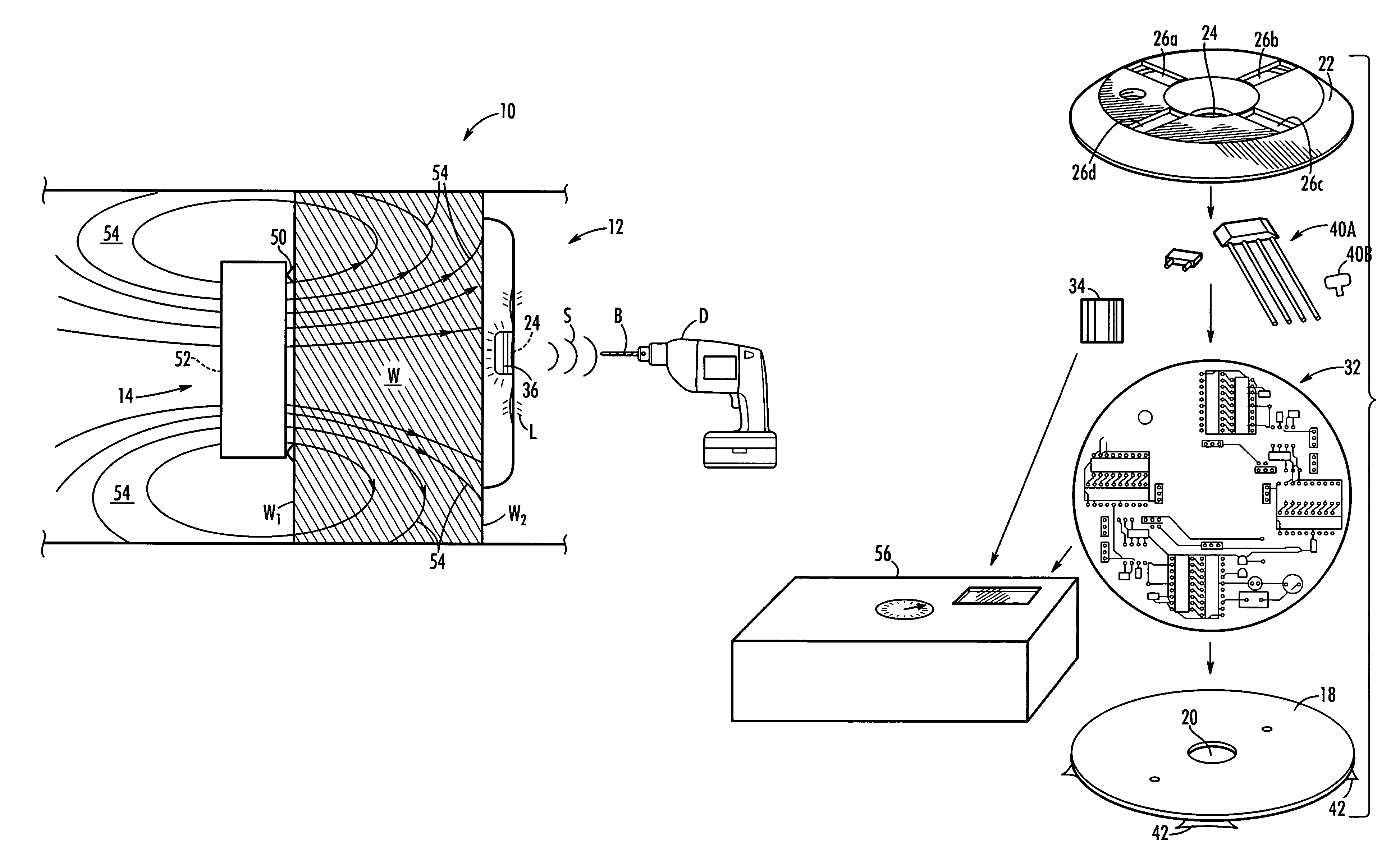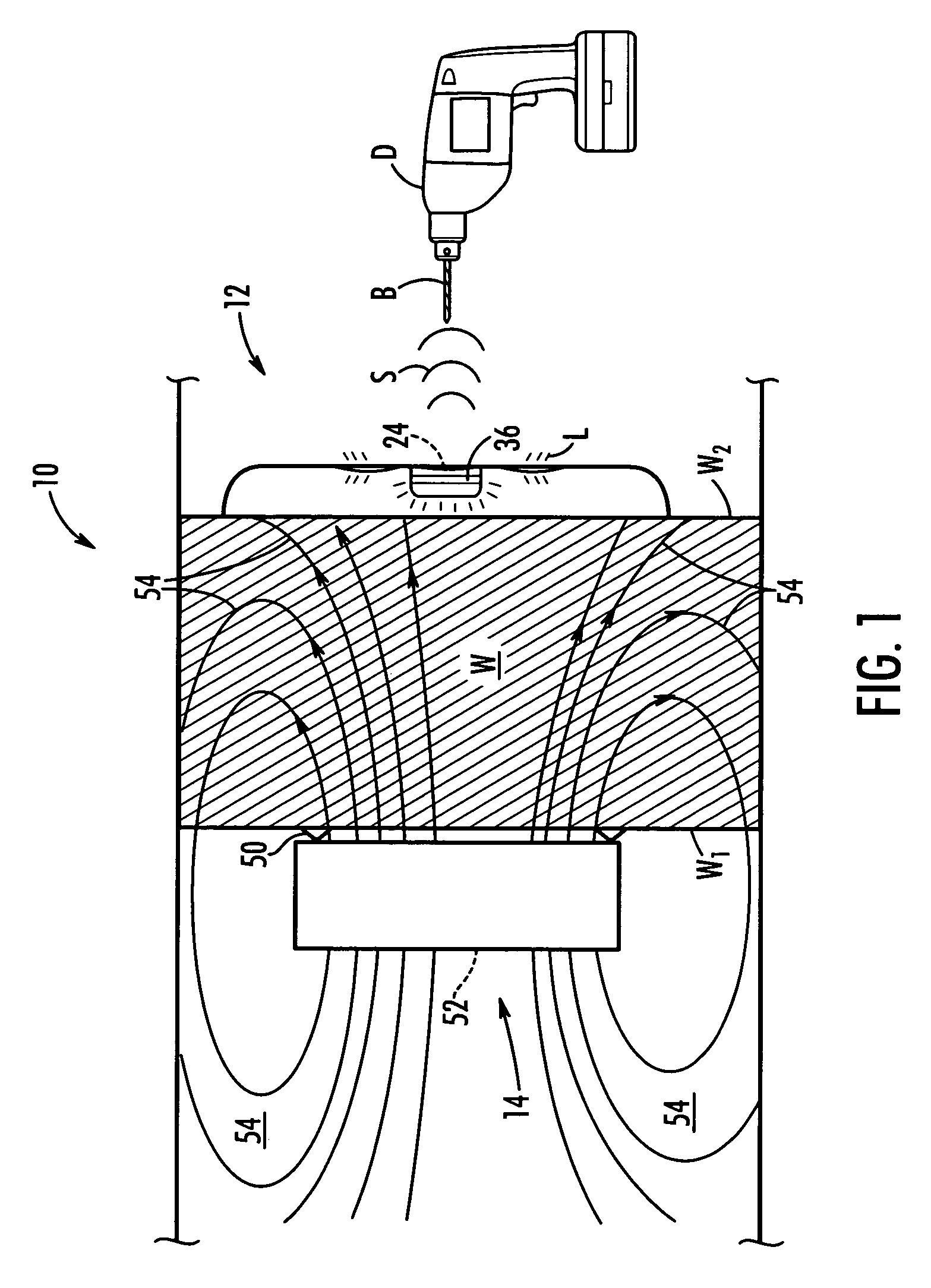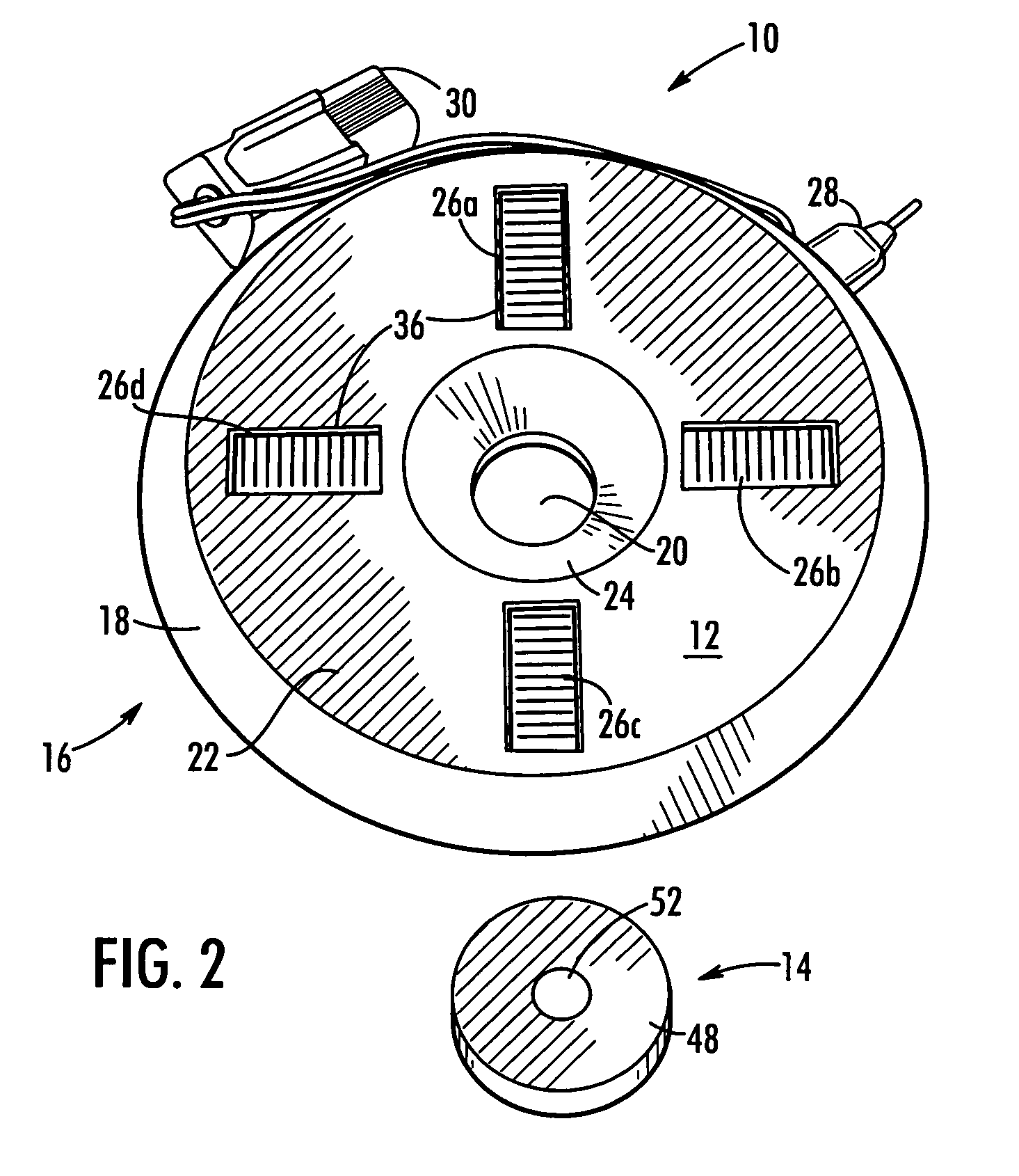Device for establishing a cutting point from a blind side of a structure
a technology of blind side and cutting point, which is applied in the direction of galvano-magnetic hall-effect devices, instruments, and using reradiation, etc. it can solve the problems of unsatisfactory cable installation, time-consuming manual measurement, and most installation technicians do not have the time or tools to make precision measurements. , to achieve the effect of simple and economical manufacturing, assembling and assembly
- Summary
- Abstract
- Description
- Claims
- Application Information
AI Technical Summary
Benefits of technology
Problems solved by technology
Method used
Image
Examples
example
[0069]To construct a prototype of the blind spot targeting system 10, preliminary measurements indicated a need to amplify a sensor signal to power the LED bars 36 as well as to remove a 2.5-volt quiescent signal. Since original estimates placed desired gain at about 25, a single-stage differential amplifier was selected for all amplification, and designed around a rail-to-rail, low-power, single-supply op amp such as model TLV2452 available from Texas Instruments, 12500 TI Boulevard Dallas, Tex. The gain of about 25 was estimated assuming the Hall-effect sensors would have a swing between 2.5 and 2.55.
[0070]Since the TI chip has two amplifiers inside, each chip was tied to two sensor-display systems. To remove the 2.5-volt quiescent signal, a 2.5-volt source (from the power circuit) was placed onto one side of the differential amplifier such that the amplifier would amplify the remaining signal based on the ratio of the feedback resistors to the input resistors. See, e.g., FIG. 6 f...
PUM
 Login to View More
Login to View More Abstract
Description
Claims
Application Information
 Login to View More
Login to View More - R&D
- Intellectual Property
- Life Sciences
- Materials
- Tech Scout
- Unparalleled Data Quality
- Higher Quality Content
- 60% Fewer Hallucinations
Browse by: Latest US Patents, China's latest patents, Technical Efficacy Thesaurus, Application Domain, Technology Topic, Popular Technical Reports.
© 2025 PatSnap. All rights reserved.Legal|Privacy policy|Modern Slavery Act Transparency Statement|Sitemap|About US| Contact US: help@patsnap.com



